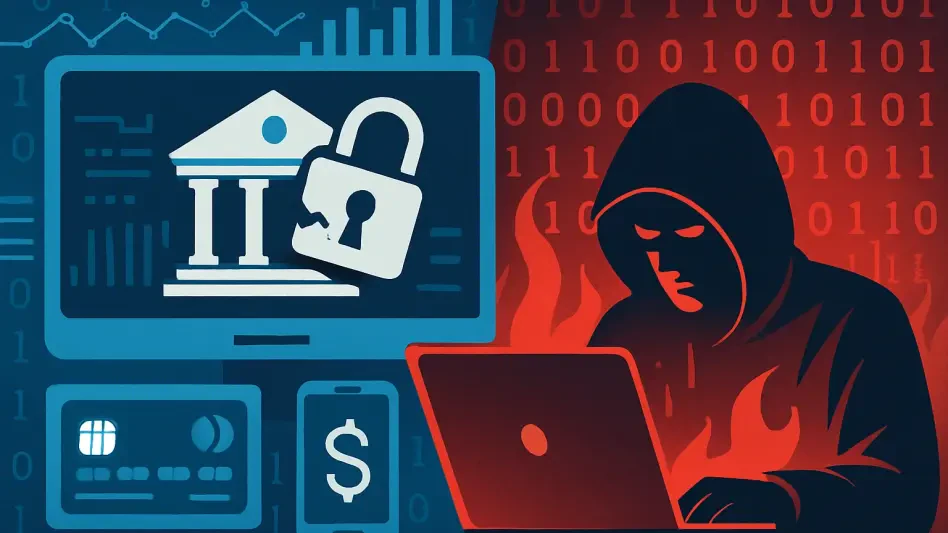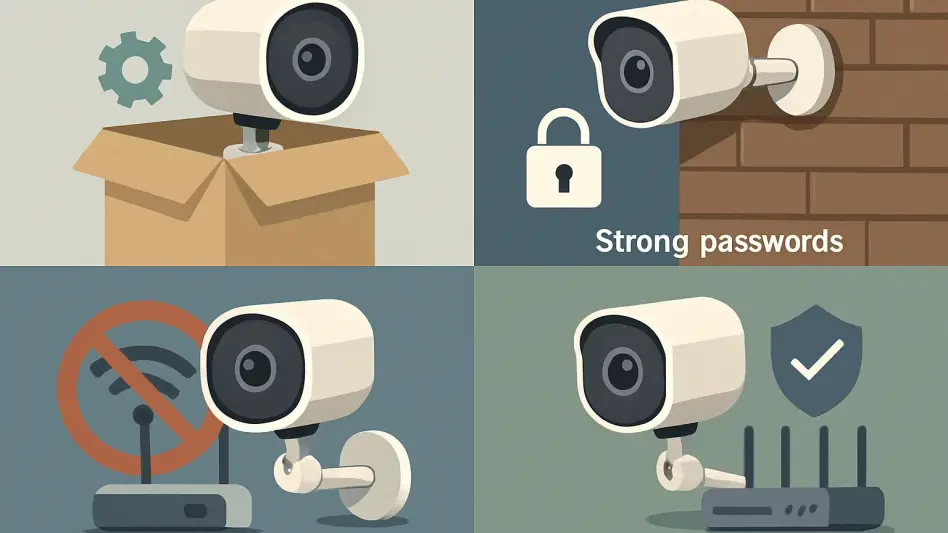Endpoints have become a primary focus in the fight against modern cyber threats. These include company-issued laptops, personal mobile devices, and even servers located in remote data centers. Any unprotected endpoint serves as a potential gateway for sophisticated cyber-attacks, making endpoint security a top priority. Traditional antivirus software and basic firewalls often fall short in detecting and mitigating complex threats, leaving organizations vulnerable. To bridge this security gap, many organizations are now deploying Endpoint Detection and Response (EDR) software as a robust defense mechanism.
What is EDR Software?
EDR software is a comprehensive security solution designed to continuously monitor, record, and analyze activities across an organization’s network and devices. Unlike traditional antivirus programs that rely on signature-based detection methods, EDR solutions use behavior analysis to identify and respond to suspicious activities. They study baseline usage patterns and detect deviations or anomalies that may indicate an attack. This approach provides in-depth visibility and helps identify unauthorized file modifications, unusual process executions, and privilege escalations—a few tactics cybercriminals use to move laterally across networks.
One of the critical benefits of EDR software is its ability to centralize data from various sources, including endpoints, server logs, and integrated Security Information and Event Management (SIEM) systems. By aggregating this information, EDR platforms provide security analysts with a comprehensive view of each incident. Modern EDR tools often feature automated response mechanisms, such as isolating compromised systems or terminating malicious processes in real time. This swift response capability significantly reduces the window of opportunity for attackers, containing threats before they can propagate.
Moreover, EDR solutions often come with post-incident forensic capabilities. These tools enable security teams to reconstruct attack timelines, gather evidence, and derive insights from each incident, fostering better policy-making and preventive measures. As organizations grow and adopt more digital technologies, EDR software acts as a central defensive layer, helping mitigate the risk of severe breaches while maintaining operational continuity.
The Need for EDR Software
Cyberattacks have become increasingly sophisticated, frequently targeting endpoints as entry points into corporate networks. A single vulnerable laptop or unpatched workstation is sufficient for an attacker to initiate a coordinated campaign. EDR software mitigates this risk by offering continuous device-level monitoring and intelligence. It identifies suspicious patterns, alerts security teams, and triggers automated responses to quickly contain the threat.
Traditional antivirus solutions rely on known signatures and virus definitions. In contrast, EDR software uses system behavior analysis to detect anomalies and correlate data across an organization’s infrastructure. This capability is critical for countering zero-day exploits, malware variants, and other tactics that can bypass traditional defenses. The real-time scanning and intelligent automation features of EDR improve detection accuracy and reduce the manual workload for busy security teams.
Additionally, regulatory requirements and industry standards increasingly mandate robust security practices, such as comprehensive endpoint monitoring. Non-compliance can result in substantial fines, reputational damage, or operational disruptions. EDR software aids in achieving compliance by providing detailed logs, tamper-proof evidence, and post-incident reports, essential during audits or investigations. Furthermore, modern workforces are distributed, with employees operating from various locations. This dispersion makes streamlined endpoint protection crucial. Whether data resides in the cloud, on company servers, or employees’ devices, EDR software offers a single pane of glass view into security events across the endpoint ecosystem. This visibility enables organizations to adapt swiftly to emerging threats and changing endpoint needs.
SentinelOne Singularity Endpoint
SentinelOne’s Singularity Endpoint is an AI-powered EDR solution that brings endpoint, cloud, and network security together on a single platform. It features automated threat detection, rapid response, and continuous visibility, aimed at reducing manual workloads. SentinelOne analyzes both known and emerging threats, helping secure distributed assets across various environments.
SentinelOne’s advanced capabilities like Storyline™ assemble logs and alerts into a coherent attack narrative, enabling security teams to trace incidents from inception to escalation and lateral movement. With RemoteOps, analysts can conduct large-scale investigations, patching, and data retrieval remotely, facilitating uninterrupted workflow even in dispersed environments. Singularity Ranger identifies and protects unmanaged devices in real-time, mitigating the risk of shadow IT.
The platform’s automated remediation features are noteworthy. For example, one-click rollback ensures swift containment and reversal of malicious changes, maintaining business continuity. ActiveEDR Framework captures all processes, flagging suspicious actions and ensuring no malicious activity goes unnoticed. Moreover, SentinelOne ensures compliance with multi-cloud frameworks like GDPR, NIST, ISO 27001, and SOC 2, offering more than 350 APIs for custom automation and integrations. Its proficiency in managing shadow IT and zero-day exploits makes it invaluable for today’s dynamic threat landscape.
Cortex from Palo Alto Networks
Cortex by Palo Alto Networks unifies data across on-premises and cloud environments, enabling real-time threat detection. This EDR solution combines AI-driven analysis with automated workflows, streamlining security incident handling and investigations. With such a unified approach, enterprises can better coordinate their defenses and respond to threats more efficiently.
Cortex Xpanse, a notable feature of the platform, monitors internet-facing assets and identifies exposed endpoints, ensuring vulnerabilities are swiftly addressed. Cortex XDR collects and analyzes data from endpoints, networks, and clouds on a single platform, providing a comprehensive security overview. Managed Threat Hunting combines human expertise with automated detection tools, enhancing the overall threat detection accuracy.
Furthermore, Cortex integrates seamlessly with XSOAR, automating incident response processes and playbooks. This integration aids in reducing the manual burden on security teams, allowing them to focus on more strategic tasks. The ability to leverage a combination of AI-driven and human-led insights ensures that the organization maintains a robust defense against evolving cyber threats.
Microsoft Defender for Endpoint
Microsoft Defender for Endpoint continuously tracks suspicious activities, helping secure organizational devices. Offering risk-based vulnerability management, it highlights critical security weaknesses that need immediate attention. The integration with the broader Microsoft ecosystem—including Microsoft Sentinel and Intune—centralizes threat monitoring, thus reducing alert fatigue through automated responses.
With automated investigation capabilities, Microsoft Defender enables swift threat handling, ensuring minimal disruption to normal operations. Its cloud-native design simplifies deployment and maintenance, making it an apt choice for modern enterprises. Additionally, the multi-device support, including for Windows and macOS, ensures comprehensive protection across the organization’s entire device fleet.
Real-time dashboards and reports provide visibility into the threat landscape, allowing security teams to make informed decisions quickly. By using Microsoft Defender for Endpoint, organizations can leverage the familiar Microsoft environment for unified security management, making it easier to enforce policies and improve overall security posture.
CrowdStrike Endpoint Security
CrowdStrike Endpoint Security combines threat intelligence, incident response, and endpoint protection into a single console. This EDR solution identifies malicious behavior across networks and cloud services, mapping intrusions’ origins and spread in real-time. CrowdStrike’s automated containment tools prevent lateral movement, enhancing organizational security.
The platform excels in incident response and forensic analysis, speeding up breach investigations. Its NGAV capabilities, powered by machine learning and behavior-based detection, identify and mitigate emerging threats effectively. By centralizing all these functionalities in a cloud-based model, CrowdStrike reduces the overhead on security teams, allowing them to focus on strategic defensive measures.
Automated containment features isolate compromised systems, preventing further spread of malicious activity. Additionally, the integration of threat intelligence keeps the organization updated on attack methods and actors, ensuring they remain a step ahead of potential threats. CrowdStrike’s overall approach streamlines endpoint security, making it a preferred choice for various enterprises.
TrendMicro Trend Vision One – Endpoint Security
Trend Vision One™ provides layered defense and comprehensive visibility across servers, endpoints, and workloads. By consolidating threat information, Trend Micro uncovers attack paths and allows organizations to improve their security posture. The platform’s predictive analysis identifies malicious files before they can cause harm, enhancing preventive measures.
Trend Micro’s proactive vulnerability protection ensures that potential weaknesses are addressed before they can be exploited. The web reputation service and application control features add additional layers of security, preventing malicious or unauthorized tools from executing. Furthermore, Trend Vision One supports various operating systems, including Linux, ensuring broad coverage.
This comprehensive approach enables organizations to defend against a wide range of threats effectively. By focusing on preventative measures and advanced detection, Trend Vision One helps maintain operational continuity even in the face of sophisticated cyber-attacks. It is an ideal solution for enterprises seeking robust and reliable endpoint protection.
Sophos Intercept X Endpoint
Sophos Intercept X Endpoint offers EDR tools to investigate, hunt for, and respond to cyber threats efficiently. The platform locates attack indicators and reviews endpoint configurations, prioritizing agent size and EDR protection strength for optimal performance. Sophos’s focus on reducing attack surfaces and minimizing resource-intensive monitoring sets it apart in the crowded EDR market.
The platform’s ability to block applications and manage application controls further strengthens its security stance. Sophos Intercept X restricts file transfers containing sensitive data and locks down servers to prevent unauthorized changes. These features, combined with its robust threat detection capabilities, provide comprehensive protection for enterprises.
By streamlining security processes and automating responses, Sophos enhances organizational defenses without overwhelming security teams. Its integration capabilities and broad device support ensure that it fits seamlessly into various IT environments, making it a reliable choice for sophisticated endpoint security needs.
Selecting the Ideal EDR Software
Choosing the right EDR software necessitates a thorough understanding of an organization’s unique needs, including network scope, compliance requirements, and available resources. Critical features to consider include logging, forensics, and attack timeline reconstruction capabilities, essential for reducing investigation times and preventing repeat breaches. Detection methods that surpass traditional scanning are crucial. Solutions utilizing machine learning or behavior analysis are better equipped to identify emerging threats.
The vendor’s track record, including the quality and timeliness of support and updates, is also vital. Integration capabilities are another key factor. Ensuring that the EDR solution fits seamlessly with existing workflows—such as SIEM or SOAR systems—is essential. Automation features, like endpoint isolation and malicious change rollback, can save time and prevent threat spread. The solution’s impact on endpoint performance must also be considered, especially in environments with many devices.
Finally, evaluating compliance and total cost of ownership is critical. Industries with strict data protection mandates require strong audit and reporting capabilities. Assessing licensing fees versus savings from automation efficiencies helps balance cost and functionality. By considering these factors, organizations can select an EDR solution that best meets their needs and enhances their overall security posture.
Conclusion
Endpoints have become a critical focus in defending against modern cyber threats, encompassing a range of devices such as company-issued laptops, personal mobile phones, and servers in remote data centers. Any unprotected endpoint can act as a gateway for sophisticated cyber-attacks, making endpoint security a top priority for organizations. Traditional antivirus software and basic firewalls often fall short in identifying and mitigating these complex threats, rendering organizations vulnerable to attacks.
Recognizing these shortcomings, many businesses are now turning toward advanced solutions like Endpoint Detection and Response (EDR) software. EDR offers a more comprehensive defense strategy, enabling better detection of malicious activities and allowing for quicker, more effective responses. These systems continuously monitor endpoints to identify threats that traditional methods might miss. EDR not only provides real-time analysis but also supports incident response, helping security teams to swiftly mitigate and remediate threats.
As cyber threats become increasingly sophisticated, relying solely on outdated security measures is no longer adequate. Companies must adopt modern technologies like EDR to bolster their defenses. This approach ensures a robust security posture, significantly reducing the risk posed by cybercriminals aiming to exploit endpoint vulnerabilities.







